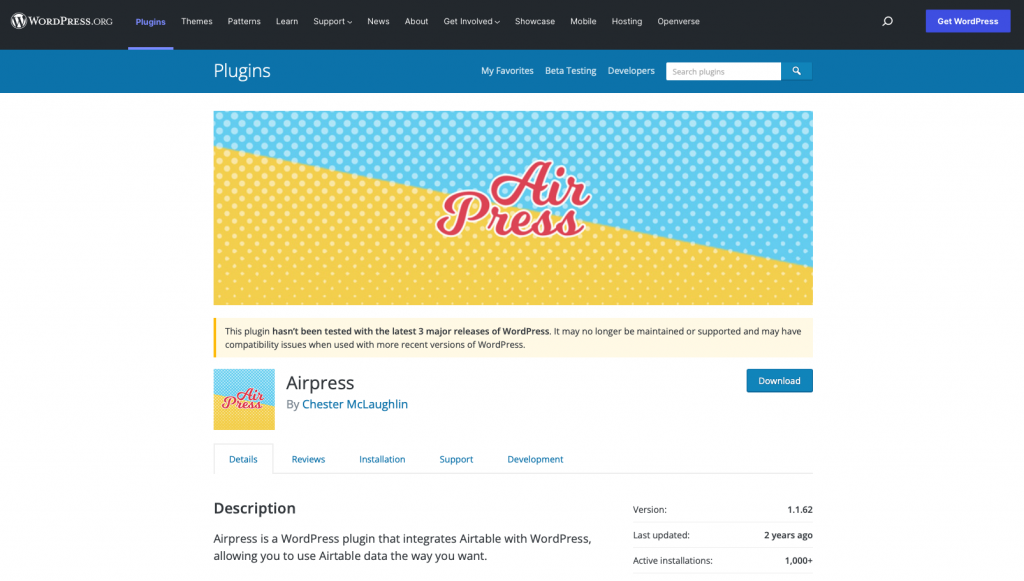Are you looking for a way to manage your WordPress content from Airtable? In this article we’ll take a look at some of the options available.
Great for: Showing Airtable records on Wordpress sites

This free plugin is available from the WordPress plugin repository, and allows you to connect your Airtable account. You can then easily embed the content within your posts using short-codes for displaying, formatting and looping through your base’s fields.
Data is cached, helpfully allowing you to reduce the impact of Airtable’s strict API rate limits. It can also be retrieved from multiple bases.
Perhaps one of the more powerful capabilities is the ability to create virtual posts for your records.You can map a URL pattern to an Airtable table, and when a request is made that matches Airpress will attempt to retrieve the record from Airtable.
You can specify a custom template page that is used to respond to requests if a matching record is found. If no record is found that matches the URL pattern, then a 404 ‘Not Found’ error is shown.
One potential issue with this plugin is its ongoing support. The plugin hasn’t been updated in almost 2 years, and hasn’t been officially tested with the latest 3 major versions of WordPress.
Posts on the support forums are also going unanswered - so while it may work today, it’s unclear what the future holds.
Great for: Flexible workflows between WordPress and Airtable
One of the benefits of Zapier is the large number of integrations available. In this case, the integration with WordPress means that you can create some powerful workflows between Airtable and WordPress.
This includes doing things like copying comments made on your posts on WordPress into an Airtable base, or archiving your WordPress posts into a base.
Similarly, you could create WordPress posts for new records when they are added to Airtable views.
Integromat also offers similar functionality if you’re already using it, or would prefer to not use Zapier.
Of course one of the limits you’ll run into with this integration is the cost. It can quickly add up if you’re running lots of Zapier tasks - at the time of writing, you’ll need to start paying if you are triggering more than 100 tasks per month with plans ranging from $19.99USD to $599 USD per month, billed annually.